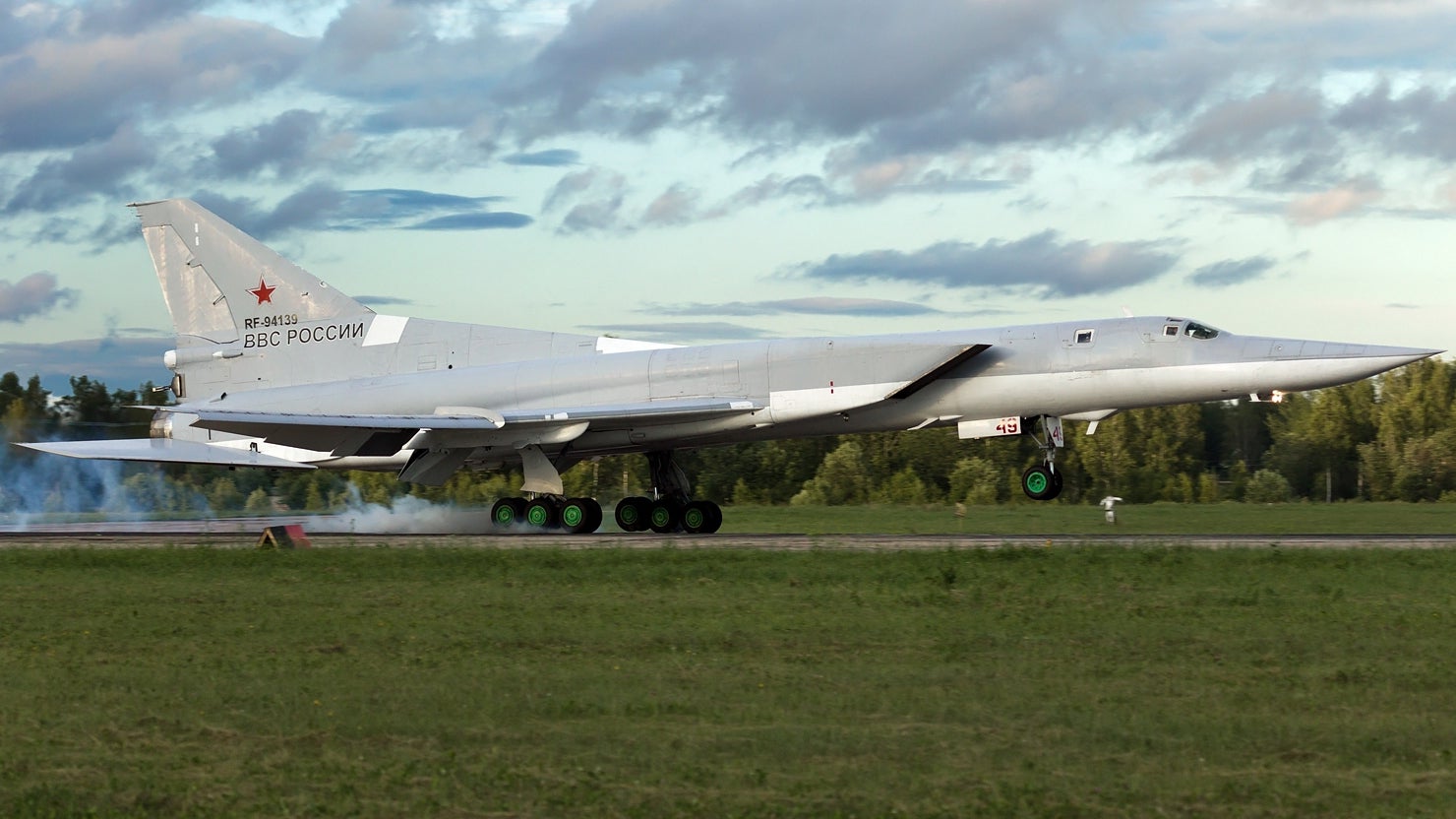Three crew have been killed in an accident today involving a Russian Aerospace Forces Tu-22M3 Backfire-C bomber at Shaykovka airbase in the Kaluga region, western Russia. The Russian Ministry of Defense confirmed that the crew lost their lives due to an “abnormal operation” of the ejection seats.
Russia’s state-run media outlet RIA Novosti said the incident occurred while the Tu-22M3 was being prepared for a training flight at Shaykovka, while its counterpart TASS
specified that the ejections were initiated when the bombers’ two engines were started on the ground. It remains unclear whether the seats were activated deliberately, or whether the ejection sequence was unintentional. A fourth crew member reportedly survived the accident and was taken to a medical facility, but it’s not known whether they ejected or remained aboard the aircraft.

An account from TV Zvezda, the official television station of the Russian Ministry of Defense, said that the three crew members were killed since there was insufficient height to safely deploy the parachutes after ejection.
The crew of four in the Tu-22M3 consists of two pilots seated side-by-side in front, with the navigator and weapons system officer seated behind them. All the crew members are provided with KT-1M ejection seats and the aircraft commander is also able to initiate the ejection sequence for the other crew members — according to Interfax, this was the case in today’s incident. However, these seats require a minimum speed of 80 miles per hour for safe ejection at altitudes below 200 feet. The Tu-22M3 has a typical takeoff speed of 230 miles per hour.
This would be in line with the aforementioned reports suggesting the ejections occurred after the engines had started but while the bomber was stationary. Even if the aircraft were taxiing, it would not have been moving fast enough to ensure the safe extraction of the crew. Modern combat aircraft are typically fitted with “zero-zero” ejection seats, which have no minimum speed or altitude criteria for safe use.
Among those killed in this mishap were the regiment commander, who was taking part in the planned mission as an instructor, a source told TASS. No one else on the ground was injured. Unconfirmed reports say the commander was Colonel Vadim Beloslyudtsev, head of the 52nd Heavy Bomber Aviation Regiment, who was well known for his aerial photography and video work, examples of which you can see in the Tweet below and on this aviation photo website.
While the Tu-22M3 is a nuclear-capable bomber, Russian media outlets reported that there were no nuclear warheads onboard the aircraft at the time of the incident. There are unconfirmed reports that the damage to the bomber is limited and that it may be possible to return it to service after repairs.
The Russian Aerospace Forces have sent an investigation team to the airfield to determine the causes of the accident, which followed a series of exercises involving Tu-22M3 squadrons in the Kaluga region earlier this week.

Tu-22M production took place between 1969 and 1993, producing over 500 examples. Today, Russia’s long-range bomber force includes around 60 Tu-22M3 bombers at three operational bases — Belaya, Olenyegorsk, and Shaykovka — plus additional examples at the Ryazan training base.
Shaykovka is home to two squadrons of Tu-22M3s under the 52nd Heavy Bomber Aviation Regiment, which has operated the Backfire since 1982. The regiment makes occasional deployments to a reverse base at Soltsy, in the Novgorod region, while its aircraft have also taken part in the Syrian campaign, flying missions from Mozdok Air Base in North Ossetia.
The last fatal accident involving a Tu-22M3 occurred on January 22, 2019, during a landing in blizzard conditions at Olenegorsk airfield in the Murmansk region. On that occasion, three crew members were killed and one survived. You can read more about that incident in this previous War Zone article.
We will update this post with additional information as it becomes available.
Contact the author: thomas@thedrive.com
